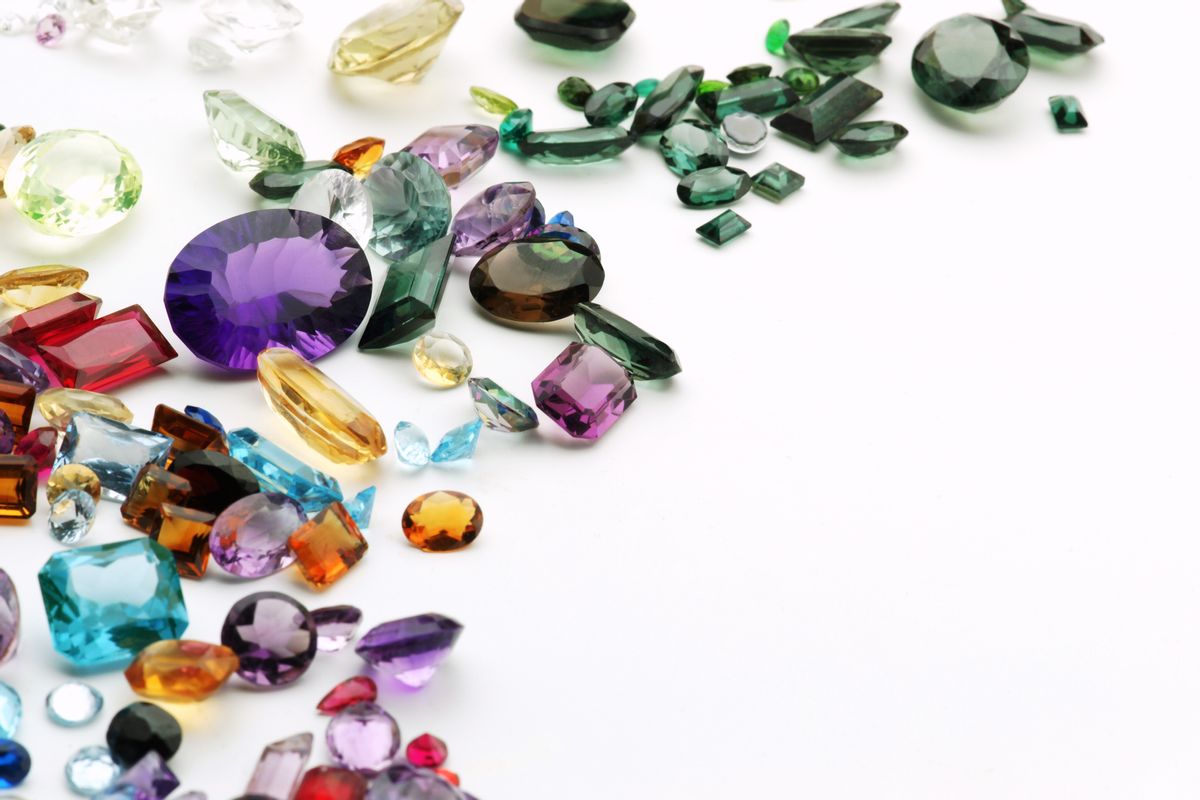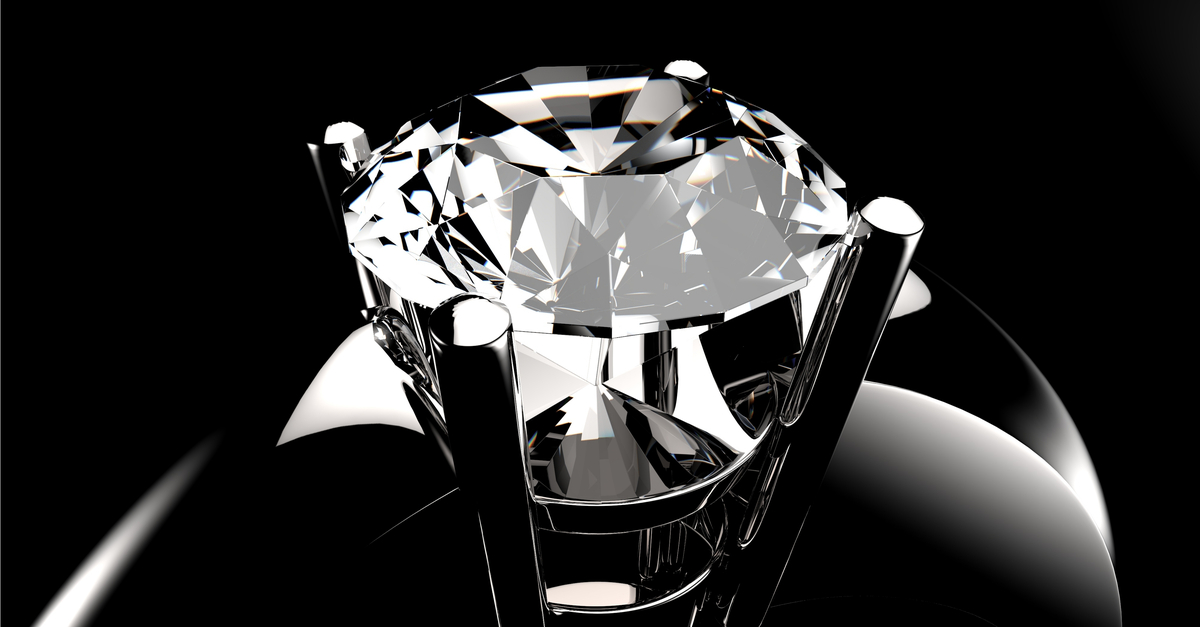People have long placed their faith in the protective powers of amulets and talismans, using such charms both to ward off evil and to attract good fortune. While most anything can be designated a good luck piece (the briefest of visits to any bingo hall will prove that), over time certain properties have come to be associated with the items most commonly worked into these guardians; namely, gemstones.
These properties can be positive or negative or a mixture of both, in that sometimes a particular type of jewel (or valuable substance we regard as being in the same class as gemstones, such as pearl and coral) can contain both good and bad elements. Fortunately, lore provides remedies for many of particular stones' baleful influences, leaving us free to wear our favorite bijous without fear that we are attracting harm to ourselves.
For instance, just as you must never give or accept a gift of a knife (lest it sever the friendship), so you must never give or accept a gift of opals or pearls. Both these precious substances must be purchased if their dire influences are to be countered. One "buys" a string of pearls by handing its presenter a small sum, such as a dollar or a quarter, thereby making a financial transaction of it. Likewise, one "buys" opals the same way — a quarter or two is immediately handed over to break the curse of these stones. Opals are further countered by wearing them in settings that incorporate diamonds, the one being said to have power over the other.
This list provides information about the purported properties of various precious gems and like substances:
- Diamond:
This costly stone symbolizes conjugal affection, which is one of the reasons why it is a favorite for engagement and wedding rings. It is said to inspire courage in a man and pride in a woman.A sighting from 1646 asserts "A diamond laid under the pillow, will betray the incontinency of a wife." How the stone is said to perform that duty is not stated, though.
Sanskrit text on the medicinal qualities of gems says "blue diamonds are to be avoided."
- Ruby: Rubies are said to change color according to the health of the wearer, particularly revealing the presence of health problems that aren't apparent to the naked eye and of which the wearer is as yet unaware. They also protect wearers against impure thoughts.
- Sapphire: These stones are said to promote love and happiness for those who own them. According to Buddhist tradition, sapphires have special powers to induce trances.
- Emerald: Emeralds confer happiness on married couples. In some parts of the world, they are thought aphrodisiacs (which may have something to do with the previous point). Women who wear them during childbirth are said to endure less pain. They also counter dysentery and epilepsy, negate the effects of snakebite, and ward off witches. The blind are said to benefit from touching them.
It has been claimed that holding an emerald under one's tongue grants the ability to summon evil spirits. Wearing one into court is a good idea because the stone is said to ensure victory in legal wrangles.
Never give an emerald on a Monday lest the stone lose some of its luck-giving ability.
- Pearl: Giving a baby pearls will ensure a long life for the child. However, pearls are best not bestowed as gifts upon anyone else because they symbolize tears and are believed to bring sadness. Pearls are never to be incorporated into an engagement or wedding ring lest they bring "tears to the marriage." Brides are particularly cautioned against wearing pearls on their wedding day lest they begin their new lives with sorrow.
Yet pearls also have aphrodisiac properties, and it is said that placing a pearl under one's pillow and sleeping on it will help childless couples to conceive. The wearing of pearls is said to cure madness, and also to be beneficial in the treatment of jaundice, and snake and insect bites. Pearls are also believed to cure depression in women.
- Opal: Except by those from the East (where perversely these stones are thought lucky), the opal is generally held to be the most ill-starred of all gemstones and is oft termed the "stone of tears." Many hold that only those born in October are safe in wearing them.
Engagement rings must never contain an opal, lest the new bride quickly become a widow.
However, placing them in a setting that also incorporates diamonds negates these stones' ability to draw sorrow to the wearer.
On the plus side, opals improve eyesight and may even grant the power of invisibility. Blondes gain the additional benefit of their opals' helping to maintain their hair color. Opals also are said to turn pale in the presence of poison and to lose their shine once their owners die.
Also, while white or milky opals are regarded as horribly jinxed, black opals are thought extremely lucky.
This list provides information about the purported properties of various semi-precious gems and like substances:
- Agate: At one time, this stone was believed to confer the power of invisibility on its owner and to turn enemies' swords against themselves. The stone offers protection against the Evil Eye and storms, plus grants its wearer an eloquent tongue. Agate is said to cure fever and poisonous bites and stings, improve eyesight, promote fertility, and make its wearer lucky in love and athletic competitions.
- Coral: Said to be a powerful protector against both sorcery and the Evil Eye, this substance also wards off nightmares. Coral is to be rubbed against a baby's gums to aid with teething and hung around the necks of older children to keep them safe from witchcraft.
Red coral is especially beneficial, offering protection to ships and houses against storms. This shade will also turn pale if its wearer's health takes a turn for the worse but will return to its original hue as the patient recovers.
- Jade: Jade is believed to bring great good luck to the wearer. In Africa, it is said to conjure up rain, in South America it is used to cure spleen problems, and in New Zealand fertility symbols are made of it.
- Topaz: This is widely regarded as a very lucky stone. It is said to symbolize both money and friends and to possess the power to draw both to the wearer. The topaz makes its owner courageous and wise, counters madness, and grants a degree of control over wild animals.
- Turquoise: This stone is an emblem of prosperity, fetching both happiness and good fortune to those who don it. At one time, it was believed to prevent dissension between husband and wife. Also, when given with an open heart, it is said to remove ill feelings that previously existed between the gift's giver and its recipient. It is also whispered to be effective at rousing sexual passion.
However, some associate the stone with corruption and decay and point to its history of use in alchemy and necromancy.
Sudden changes in the brilliance of its blue are said to herald danger to the wearer.
- Amethyst: Besides denoting sincerity, this stone has the power to prevent drunkenness in those who wear it.
- Carnelian: These stones bestow a contented mind upon their wearers. When worn in a silver ring, they ensure many friends and preserve their wearer from losses and harm.
Certain famous gems are purported to have curses attached to them, such as the Hope Diamond and the Black Orlov. These curses have little to do with the innate properties of the stones themselves but rather are products of the histories of each of these gems.


